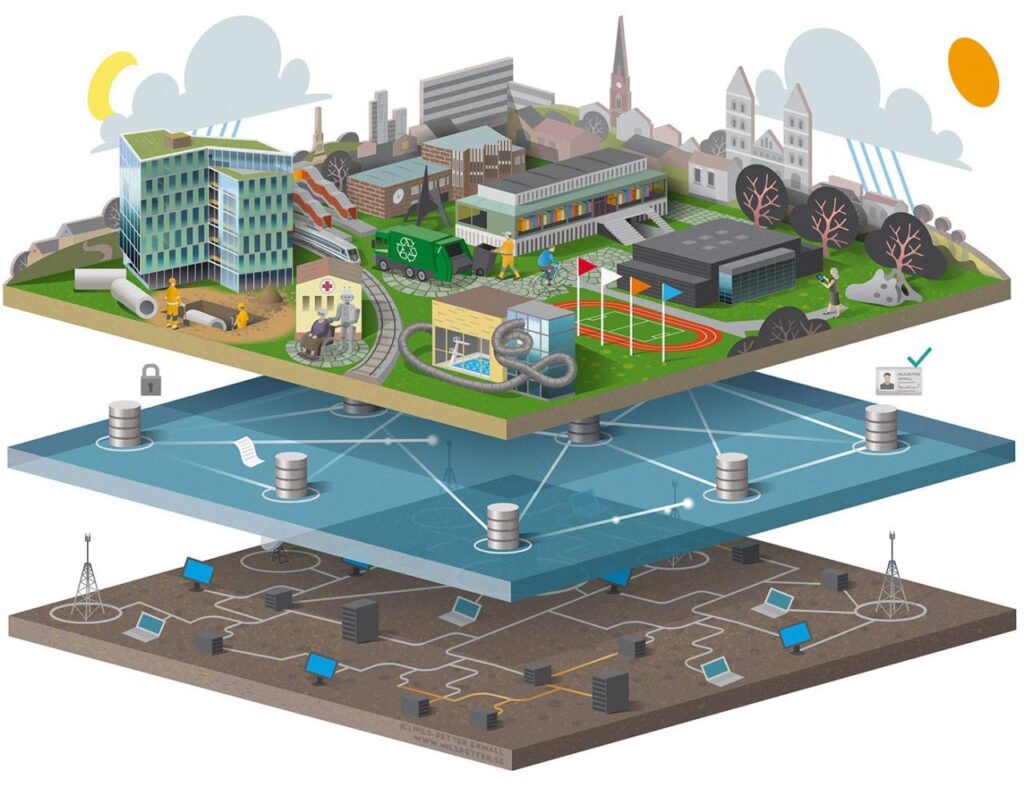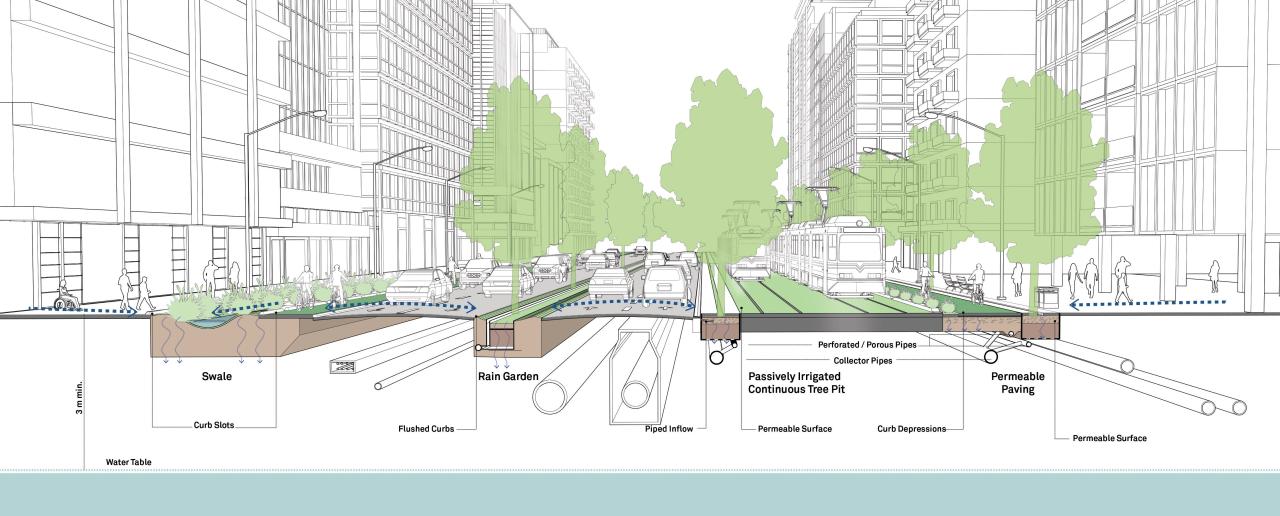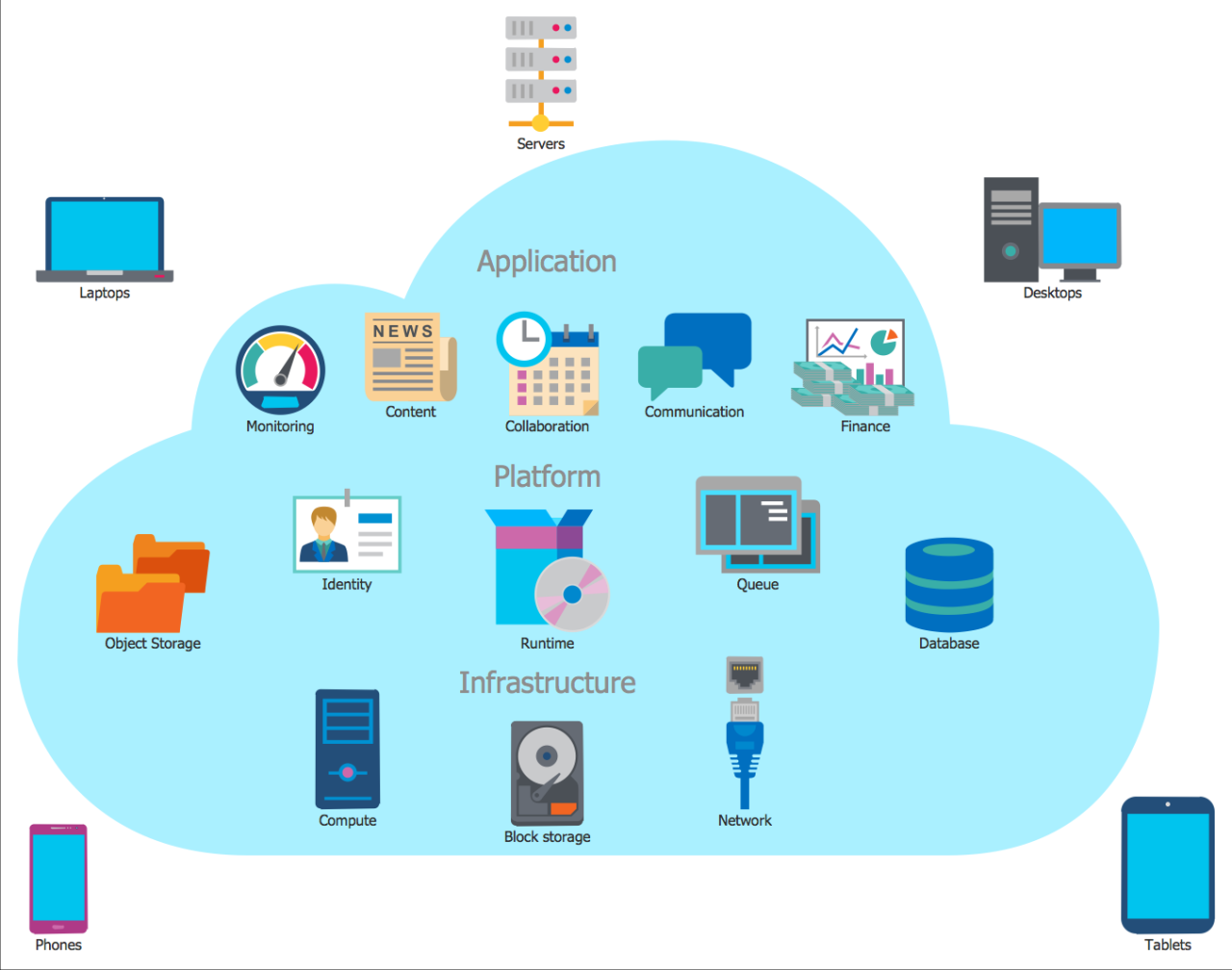In the relentless pursuit of speed, stability, and innovation in software delivery, DevOps has emerged as a transformative cultural and technical movement. A cornerstone of this philosophy is the seamless integration of development and operations, underpinned by extensive automation. Within this integrated ecosystem, automating infrastructure layouts stands out as a critical practice. It means defining, provisioning, and managing the underlying IT environment—servers, networks, databases, and more—through code and automated processes, rather than manual intervention. This approach not only slashes deployment times and minimizes human error but also ensures unparalleled consistency, scalability, and security across all environments. It’s the very heartbeat of a modern DevOps flow, meticulously laying out the digital foundation for continuous, high-quality software.
The Evolution of Operations: Why Automation Became Imperative
To fully appreciate the profound impact of automating infrastructure layouts within a DevOps flow, it’s essential to understand the historical context of IT operations and the inherent bottlenecks that pushed the industry towards automation.
A. The Traditional IT Silo: Manual and Risky
For decades, IT operations and software development existed largely in separate, often adversarial, silos. Software was developed by one team and then “thrown over the wall” to another team for deployment and maintenance. This fundamental separation, coupled with manual processes, created significant friction and inefficiencies.
- Manual Provisioning: The Bottleneck: Infrastructure setup was a slow, labor-intensive process. Each server, network device, or database instance required human intervention, often involving logging into systems, running scripts, and configuring settings manually. This could take days or weeks, creating a major bottleneck for software releases.
- Configuration Drift and Inconsistency: Manual configurations were highly susceptible to human error. Subtle differences inevitably crept in between development, testing, staging, and production environments. This “configuration drift” made debugging challenging and compromised the reliability of deployments, often leading to the infamous “it works on my machine” syndrome, but not in production.
- Scalability Challenges: Scaling infrastructure manually to meet fluctuating demands was a daunting and slow task. Adding new servers, configuring load balancers, and integrating them into existing systems required significant effort for each addition, hindering an organization’s ability to respond quickly to market needs.
- Security Gaps and Compliance Headaches: Manual processes often led to inconsistent security configurations. Ensuring compliance with regulatory standards (like HIPAA, PCI DSS) was a continuous audit nightmare, relying on human diligence rather than automated enforcement. Security vulnerabilities could easily be introduced through overlooked manual steps.
- Knowledge Silos and Bus Factor: Critical infrastructure knowledge often resided in the heads of a few experienced IT administrators. If these individuals were unavailable or left the organization, their expertise often departed with them, leaving crucial configurations poorly understood and difficult to replicate or troubleshoot.
B. The Rise of Automation: Scripting and DevOps
The advent of scripting languages (like Bash, Python, Perl) brought the first wave of automation, enabling repetitive tasks to be coded. However, true transformative change came with the philosophy of DevOps, which champions collaboration, continuous integration, continuous delivery (CI/CD), and, crucially, comprehensive automation across the entire software delivery lifecycle.
- Infrastructure as Code (IaC): This foundational DevOps practice defines infrastructure (servers, networks, databases, etc.) using machine-readable definition files (code). These files become the single source of truth for the desired state of the infrastructure. IaC ensures consistency and repeatability.
- Configuration Management (CM): Tools emerged to automate the configuration of software and settings on servers, ensuring consistency across fleets of machines.
- CI/CD Pipelines: Automated pipelines now build, test, and deploy code changes (including infrastructure changes) frequently and reliably. This allows for rapid iteration and deployment, essential for continuous delivery.
- Monitoring and Observability: Automation extended to collecting metrics, logs, and traces from systems, enabling proactive monitoring and faster incident response in complex, distributed environments.
This shift from manual, ad-hoc operations to codified, automated workflows is the essence of modern infrastructure management, integral to a high-performing DevOps culture.
Core Principles of Automating Infrastructure Layouts in DevOps
Automating infrastructure layouts within a DevOps framework is not just about using tools; it’s about adhering to specific principles that ensure efficiency, reliability, and security.
A. Infrastructure as Code (IaC): The Blueprint in Text
At the heart of automating infrastructure layouts is the principle of Infrastructure as Code (IaC). This means defining your entire infrastructure stack—from virtual machines and networks to databases, load balancers, and security policies—using human-readable and machine-executable code files.
- Declarative Approach: Most modern IaC tools (like Terraform, AWS CloudFormation, Azure Resource Manager) use a declarative approach. You describe what the desired state of your infrastructure should be, and the tool figures out how to achieve that state. This is more robust than imperative scripting, which specifies a sequence of commands.
- Version Control Integration: All IaC files are stored in a version control system (VCS), primarily Git. This allows for:
- Change Tracking: A complete history of who made what changes, when.
- Collaboration: Teams can collaborate on infrastructure changes using familiar software development workflows (branches, pull requests, code reviews).
- Rollbacks: The ability to instantly revert to any previous, known-good state if a deployment introduces issues.
- Auditing: A clear, auditable trail of all infrastructure modifications for compliance and security.
- Idempotency: IaC tools are designed to be idempotent. Applying the same IaC configuration multiple times will always result in the same infrastructure state. If a resource is already in the desired state, no changes are made. This predictability is crucial for consistent deployments and prevents configuration drift.
B. Embracing Immutable Infrastructure
While related to IaC, immutable infrastructure is a distinct principle that significantly enhances reliability and reduces configuration drift. Instead of making in-place changes or patches to existing servers, the immutable approach dictates that once a server (or any infrastructure component) is provisioned, it is never modified.
- Reduced Drift: This entirely eliminates configuration drift, as every new deployment starts from a clean, known-good image.
- Predictability: Deployments become highly predictable. If an image works in a testing environment, it will work identically in production.
- Simpler Rollbacks: Rolling back to a previous version simply means deploying the previous immutable image and redirecting traffic, a much safer operation than attempting to reverse in-place changes.
- Faster Deployments: While building new images takes time, once built, deploying them can be very fast, especially with containerization.
This is often achieved by creating machine images (AMIs for AWS, VM images for Azure/GCP) or container images (Docker images) that bundle the operating system, dependencies, and application code.
C. Continuous Integration and Continuous Delivery (CI/CD)
Automating infrastructure layouts reaches its full potential when integrated into a robust CI/CD pipeline. This extends automation beyond just code compilation and testing to include the provisioning and configuration of environments themselves.
- Automated Environment Provisioning: The CI/CD pipeline can trigger IaC tools to spin up new testing environments for every code change, ensuring that code is always tested against fresh, consistent infrastructure.
- Automated Deployment: Once code and infrastructure changes pass all tests, the pipeline automatically deploys them to staging and then production environments. This minimizes human intervention and speeds up releases.
- Fast Feedback Loops: Automated pipelines provide rapid feedback on the success or failure of both code and infrastructure changes, allowing teams to quickly identify and fix issues.
- Reduced Release Risk: By automating and standardizing the deployment process, the risk associated with releases is significantly reduced, enabling more frequent and smaller deployments.
D. Comprehensive Observability
You can’t manage or improve what you can’t see. Comprehensive observability is critical for any automated infrastructure layout, providing the insights needed to ensure performance, identify bottlenecks, and troubleshoot issues quickly.
- Centralized Logging: Aggregate logs from all infrastructure components (servers, networks, containers, databases) into a centralized logging platform (e.g., ELK Stack, Splunk, cloud-native log services). This provides a holistic view for debugging and auditing.
- Metrics and Monitoring: Collect detailed metrics on infrastructure performance (CPU utilization, memory usage, network I/O, disk I/O, database connections) and application-specific metrics. Use monitoring tools (e.g., Prometheus, Grafana, Datadog) to visualize these metrics and set up proactive alerts for anomalies.
- Distributed Tracing: For complex, distributed applications (like microservices), distributed tracing (e.g., OpenTelemetry, Jaeger) is essential. It tracks the flow of a single request across multiple services and infrastructure components, helping pinpoint latency issues and bottlenecks.
- Alerting and Incident Response: Configure intelligent alerts that notify operations teams of critical issues, coupled with well-defined runbooks and playbooks for rapid incident response, leveraging automation for self-healing where possible.
E. Policy as Code and Governance Automation
As infrastructure becomes code, so too can the rules governing it. Policy as Code involves defining compliance, security, and cost governance policies directly in machine-readable code.
- Automated Compliance: Policies can automatically validate IaC configurations before deployment, ensuring that all provisioned resources adhere to internal standards and external regulatory requirements (e.g., PCI DSS, HIPAA, GDPR).
- Security Guardrails: Security policies (e.g., “no public S3 buckets,” “all databases must be encrypted”) are enforced automatically at the time of infrastructure provisioning, reducing the risk of human error leading to vulnerabilities.
- Cost Governance: Policies can enforce cost optimization rules, preventing the provisioning of overly expensive resources or enforcing tagging for cost allocation.
This shift moves governance from reactive audits to proactive, automated enforcement within the CI/CD pipeline.
Strategic Advantages of Automating Infrastructure Layouts
Integrating automated infrastructure layouts into your DevOps flow delivers a multitude of strategic benefits that directly impact an organization’s bottom line and competitive posture.
A. Drastically Accelerated Time-to-Market
One of the most immediate and impactful benefits is the drastic acceleration of time-to-market for new applications and features. By automating the provisioning of environments and deployment pipelines, the time required to go from code complete to production-ready is slashed from weeks or days to mere hours or minutes. This agility allows businesses to respond rapidly to market changes, seize new opportunities, and gain a significant competitive edge by deploying innovative solutions much faster than competitors relying on manual processes.
B. Unparalleled Consistency and Reliability
Automating infrastructure layouts via IaC guarantees unparalleled consistency and reliability across all environments – from a developer’s local machine and testing sandboxes to staging and production systems. Since every infrastructure component is defined in version-controlled code, every deployment from that code will result in an identical environment. This eradicates the notorious “configuration drift” problem, ensures that what developers test is precisely what users experience in production, and drastically reduces the risk of environment-specific bugs or performance issues, leading to far more predictable and stable deployments.
C. Significant Cost Efficiencies and Optimization
While automation requires an initial investment in tooling and training, it leads to significant long-term cost efficiencies and optimization. By automating repetitive tasks, the reliance on extensive manual labor for infrastructure setup and maintenance is drastically reduced, freeing up valuable IT personnel to focus on more strategic, high-value initiatives. Furthermore, in cloud environments, the ability to rapidly provision and, critically, de-provision resources means organizations only pay for what they need, when they need it, leading to optimized cloud spending and preventing wastage from idle resources. Reduced errors and faster incident resolution also directly contribute to cost savings by minimizing expensive downtime.
D. Enhanced Security Posture and Compliance
Automating infrastructure layouts intrinsically improves an organization’s security posture and simplifies compliance efforts. By defining security configurations (e.g., firewall rules, Identity and Access Management (IAM) policies, network ACLs, encryption settings) directly in version-controlled code, organizations can enforce security best practices consistently and automatically across all environments. Automated checks and policy-as-code validations can be integrated into CI/CD pipelines to proactively identify and rectify security misconfigurations before deployment. This dramatically reduces the risk of human error leading to vulnerabilities and simplifies auditing, as the desired state of infrastructure security is explicitly documented, version-controlled, and automatically verified.
E. Improved Collaboration and Transparency
Storing infrastructure definitions in version control systems like Git, and integrating them into shared CI/CD pipelines, fosters enhanced collaboration and transparency within and across teams. Developers, operations engineers (often called SREs or Cloud Engineers), and security teams can work together on infrastructure changes using familiar software development workflows like feature branches, pull requests, and peer code reviews. This promotes a shared understanding of the infrastructure, facilitates efficient knowledge transfer, and inherently reduces communication silos, fundamentally breaking down traditional barriers between development and operations, a key tenet of DevOps culture. Every change becomes traceable, visible, and auditable.
F. Streamlined Disaster Recovery and Business Continuity
Automating infrastructure layouts dramatically simplifies disaster recovery (DR) and significantly enhances business continuity. In the event of a catastrophic failure (e.g., a regional cloud outage, a major security incident), an entire infrastructure stack can be quickly and reliably rebuilt from its IaC definitions. Instead of relying on complex manual recovery steps or restoring from traditional backups of running systems, organizations can leverage their IaC repository as the ultimate, executable blueprint for recovery. This enables significantly faster Recovery Time Objectives (RTOs) and lower Recovery Point Objectives (RPOs), ensuring minimal disruption to critical business operations and protecting revenue streams.
G. Supports Cloud-Native and Microservices Architectures
Automated infrastructure provisioning is a fundamental enabler for modern cloud-native and microservices architectures. These architectures, characterized by numerous small, independently deployable services, would be virtually impossible to manage manually. IaC provides the programmatic control necessary to provision, scale, and de-provision the dynamic and often ephemeral infrastructure (e.g., Kubernetes clusters, serverless functions, message queues) required by such complex, distributed systems at speed and scale. It’s the operational backbone for these advanced architectural styles.
Challenges and Considerations in Automating Infrastructure Layouts
While the benefits of automating infrastructure layouts are compelling, its successful implementation is not without its challenges. Organizations must be prepared to address these complexities to ensure a smooth transition and sustainable operation.
A. Initial Learning Curve and Skill Transformation
Implementing automated infrastructure layouts requires a significant shift in mindset and the acquisition of new skill sets for both traditional IT operations teams and software developers. Learning specific IaC tools (e.g., Terraform’s HashiCorp Configuration Language (HCL), AWS CloudFormation’s YAML/JSON syntax, Ansible’s YAML playbooks) and understanding their nuances presents a considerable initial learning curve. Operations teams, traditionally accustomed to manual configurations and GUI-based management, must transition to a code-centric, version-controlled approach, potentially requiring substantial upskilling, training programs, and a cultural adaptation to “Ops as Code.” Bridging this skill gap can be a significant hurdle.
B. Complex Tooling Landscape and Integration
The ecosystem of tools for automating infrastructure layouts is rich and rapidly evolving, but also quite fragmented and complex. Choosing the right tool(s) for specific tasks (e.g., a provisioning tool like Terraform, a configuration management tool like Ansible, a container orchestrator like Kubernetes, and specialized cloud provider services) can be challenging. Furthermore, effectively integrating these diverse tools into a cohesive, end-to-end CI/CD pipeline, managing their dependencies, and ensuring smooth data flow between them adds another layer of tooling complexity, requiring expertise in orchestration, API integration, and pipeline design.
C. State Management for Declarative Tools
For declarative IaC tools like Terraform, managing the infrastructure state file is a critical and often overlooked aspect. This file tracks the real-world state of your infrastructure resources and maps it to your IaC code. Incorrectly managed state files can lead to serious issues, such as unintended resource deletion, misconfiguration, or conflicts. Securely storing, locking (to prevent concurrent modifications), and regularly backing up these state files (especially in collaborative team environments) requires careful planning and robust operational practices. Cloud-native backends (like AWS S3 with DynamoDB locking, Azure Blob Storage, Terraform Cloud/Enterprise) are crucial here.
D. Granular Security and Access Control
While IaC inherently enhances security through consistency, it also introduces new security considerations. The credentials used by IaC tools and automated pipelines to interact with cloud providers or on-premises systems often have extensive, highly privileged permissions (e.g., the ability to create, modify, or delete entire environments). Managing these sensitive secrets and access controls securely (e.g., using dedicated secret management services like HashiCorp Vault, AWS Secrets Manager, Azure Key Vault, along with granular IAM policies and the principle of least privilege) is absolutely paramount to prevent unauthorized infrastructure changes, data breaches, or malicious actions. A compromised IaC pipeline can have far-reaching, catastrophic consequences.
E. Robust Testing and Validation Methodologies
Testing automated infrastructure layouts, especially integration and end-to-end testing of complex, distributed infrastructure deployments, can be significantly challenging. It often requires spinning up isolated, temporary sandbox environments, running extensive automated validation checks against the provisioned resources, and then methodically tearing them down. Developing robust testing strategies for IaC (beyond simple syntax validation and static analysis), which might include policy enforcement tests, security scanning, and functional validation of deployed services, demands specialized frameworks, dedicated test environments, and a disciplined approach to ensure the deployed infrastructure behaves as expected under various conditions before it ever reaches production.
F. Migrating Legacy and Existing Manual Infrastructure
For organizations with a substantial amount of existing, manually provisioned or “snowflake” infrastructure, migrating to a fully IaC model can be a massive and complex undertaking. The process of accurately identifying the current undocumented state, meticulously refactoring existing configurations into IaC code, and managing the transition without disrupting live, critical systems can be a time-consuming and resource-intensive process. This often involves adopting a gradual, incremental approach, such as the Strangler Fig Pattern, where new components are built with IaC, and legacy parts are slowly replaced, rather than attempting a risky “big bang” conversion.
G. Managing Drift Detection and Remediation
Despite the best intentions, manual changes or out-of-band modifications can still occur on deployed infrastructure, leading to a deviation from the IaC-defined state—this is known as configuration drift. Implementing effective drift detection mechanisms (e.g., continuous scanning tools, periodic comparisons of actual vs. desired state) and developing automated or semi-automated remediation strategies to either revert unintended changes or update IaC to reflect intentional ones, becomes an ongoing operational challenge. Without proper management, drift can undermine the consistency benefits of IaC.
Best Practices for Mastering Automated Infrastructure Layouts
To maximize the immense benefits of automating infrastructure layouts within a DevOps context and effectively mitigate its inherent complexities, organizations should rigorously adhere to a set of proven best practices. These guidelines are crucial for designing, developing, and operating IaC-driven systems efficiently, securely, and at scale.
A. Treat Infrastructure as First-Class Software Code
Embrace the core philosophy: treat your infrastructure definitions as first-class software code. This is the bedrock of IaC. Store all IaC files in a version control system (VCS), with Git being the overwhelming industry standard. Implement standard software development practices such as disciplined branching strategies (e.g., Gitflow, GitHub Flow), mandatory pull requests (PRs) for peer review of all proposed changes, and regular, atomic commits with clear, descriptive messages. This ensures a complete, traceable audit trail, easy rollbacks to previous stable versions, and seamless collaborative development among multiple teams.
B. Start Small, Iterate, and Grow Organically
Avoid the temptation of a daunting ‘big bang’ re-architecture where you attempt to automate your entire infrastructure overnight. Instead, adopt an iterative and incremental approach. Begin by automating the provisioning of a single, less critical component, a new greenfield project, or a specific, well-understood environment using IaC. Learn valuable lessons from this initial experience, refine your processes, tooling, and team skills, and then gradually expand the scope of IaC adoption across your broader infrastructure landscape. This measured approach significantly reduces risk, builds confidence, and allows teams to develop expertise organically.
C. Wisely Choose and Integrate the Right Tools
The IaC ecosystem is vast. Carefully select IaC tools that align with your organizational needs, existing technology stack, target cloud providers (if applicable), and specific use cases. For example:
- For Resource Provisioning: Terraform (for cloud-agnostic definitions) or cloud-specific tools like AWS CloudFormation or Azure Resource Manager (ARM) are excellent for defining and provisioning core infrastructure resources.
- For Configuration Management (within instances): Ansible, Chef, or Puppet are strong choices for installing software, managing services, and configuring operating systems after instances are provisioned.
- For Container Orchestration: Kubernetes (and its managed cloud variants like AWS EKS, Azure AKS, Google GKE) is the de facto standard for deploying and managing containerized applications, and it’s often provisioned itself by IaC tools like Terraform.
- For Policy Enforcement: Tools like Open Policy Agent (OPA) or cloud-native policy services (e.g., AWS Organizations Service Control Policies (SCPs), Azure Policy) are crucial for defining and enforcing governance rules.
Often, a strategic combination of these tools is used to cover the entire infrastructure lifecycle, necessitating thoughtful integration.
D. Design for Idempotency and Embrace Immutability
Ensure all your IaC configurations are inherently idempotent, meaning that applying them multiple times will consistently yield the same infrastructure state without unexpected side effects. Leverage the built-in idempotency features of your chosen IaC tools. Furthermore, strongly encourage the immutable infrastructure pattern. Instead of modifying or patching existing servers in place (which can introduce drift), provision entirely new instances with updated configurations. Once the new instances are healthy and validated, gracefully shift traffic to them and then decommission the old instances. This approach drastically reduces configuration drift, simplifies rollbacks, and makes deployments significantly more predictable and reliable.
E. Implement Robust Automated Testing for Infrastructure Code
Just like application code, your IaC definitions are critical and require rigorous testing. Implement a comprehensive automated testing strategy for your infrastructure code that includes:
- Linting and Syntax Validation: Use tools to check for basic syntax errors, ensure adherence to coding standards, and identify common misconfigurations (e.g.,
terraform validate,ansible-lint,cfn-lint). - Static Analysis and Security Checks: Utilize specialized tools (e.g., Checkov, tfsec, Terrascan, InSpec) that analyze your IaC code for potential security vulnerabilities, compliance violations, or inefficient configurations before deployment.
- Unit and Integration Tests: Develop tests for individual IaC modules or small groups of interconnected resources to ensure they deploy as expected in isolated, temporary environments.
- End-to-End/Acceptance Tests: For critical infrastructure components, deploy a complete, temporary environment from your IaC and run automated functional, performance, and security tests against it to validate its behavior and integration points before promoting to production.
Automated testing shifts the detection of errors “left” in the development cycle, catching issues early when they are cheapest and easiest to fix.
F. Implement Secure Credential and Access Management
Given the powerful capabilities of IaC tools to manage vast amounts of infrastructure, managing credentials and access control is paramount for security. Adhere strictly to the principle of least privilege, granting IaC tools, automated pipelines, and human users only the absolute minimum necessary permissions to perform their specific tasks. Utilize dedicated secret management services (e.g., HashiCorp Vault, AWS Secrets Manager, Azure Key Vault, Google Secret Manager) to securely store and retrieve sensitive information (API keys, database passwords, private keys). Implement multi-factor authentication (MFA) for all administrative access and regularly audit access policies to ensure ongoing compliance and security. A compromised IaC pipeline is a direct path to a major breach.
G. Promote Modularity and Maximize Reusability
Break down your IaC definitions into smaller, reusable modules, templates, or roles. These modules should encapsulate common infrastructure patterns or reusable components (e.g., a standard Virtual Private Cloud (VPC) definition, a secure web server cluster, a managed database instance with replication, a load balancer with specific configurations). Reusing these standardized modules not only reduces duplication of effort but also dramatically improves consistency across different projects, accelerates the provisioning of new environments, and enhances maintainability of your infrastructure code. Versioning these modules independently allows for better management of dependencies and changes.
H. Build a Comprehensive Observability Stack
For IaC-managed infrastructure, a robust observability stack is non-negotiable for operational excellence. Implement centralized logging, monitoring, and tracing for all provisioned resources and the applications running on them. Use IaC itself to provision and configure logging agents, monitoring endpoints, and tracing instrumentation. Collect comprehensive metrics on resource utilization, performance (latency, throughput), and health. Integrate these with powerful dashboards (e.g., Grafana, custom cloud dashboards) and intelligent alerting systems to gain real-time insights into your infrastructure’s behavior under load and to quickly identify and troubleshoot issues when they arise.
I. Foster a Collaborative and Transparent DevOps Culture
Automating infrastructure layouts is a fundamental pillar of a successful DevOps transformation. Cultivate a collaborative culture where development, operations, and security engineers work hand-in-hand, sharing ownership and responsibility for the entire software delivery lifecycle, including infrastructure. This involves shared access to IaC code, cross-functional teams, and a mutual understanding of both application and infrastructure needs. Encourage open communication, continuous feedback loops, joint problem-solving sessions, and a culture of blameless post-mortems to continuously improve processes and infrastructure. This cultural alignment is as critical as the technical implementation.
J. Establish Robust State Management and Drift Detection
For declarative IaC tools like Terraform, careful and robust state management is paramount. Store state files securely in a remote, shared, and versioned backend (e.g., AWS S3 with DynamoDB locking, Azure Blob Storage with state locking, Terraform Cloud/Enterprise). Implement state locking to prevent concurrent modifications that can corrupt the state. Furthermore, regularly perform drift detection by comparing the actual state of your deployed infrastructure with its definition in your IaC repository. Implement automated alerts for detected drift and establish clear processes for remediation, either by automatically reverting manual changes or by updating the IaC to reflect intentional out-of-band modifications, ensuring your code remains the single source of truth for your infrastructure.
The Future Trajectory of Automated Infrastructure Layouts
The realm of automated infrastructure layouts within DevOps is dynamic and continuously evolving, driven by the increasing adoption of cloud computing, the maturity of cloud-native architectures, and the relentless push for greater automation, intelligence, and resilience in IT operations. Several key trends are poised to shape its future trajectory.
A. Deeper Integration with AI/ML and AIOps
Artificial Intelligence and Machine Learning will play an increasingly prominent role in optimizing and managing automated infrastructure. This includes AI/ML-driven infrastructure optimization (e.g., intelligent autoscaling recommendations, predictive resource allocation), AIOps platforms for automated anomaly detection, root cause analysis, and proactive incident remediation. Future IaC might even incorporate AI to generate or optimize infrastructure configurations based on desired outcomes and historical performance data, moving towards more autonomous infrastructure management.
B. Pervasive Adoption of Cloud-Native Platforms and PaaS
As organizations embrace cloud-native patterns, there will be an even greater emphasis on leveraging highly managed cloud services and Platform as a Service (PaaS) offerings. IaC will evolve to more seamlessly provision and configure these higher-level abstractions (e.g., fully managed Kubernetes services, serverless platforms, managed databases, message queues). The focus will shift from provisioning individual VMs to defining complex cloud-native application delivery platforms.
C. Beyond Infrastructure: Everything as Code (X-as-Code)
The principles of IaC are expanding beyond just infrastructure to encompass virtually every aspect of the software delivery lifecycle. The concept of Everything as Code (X-as-Code) will gain further traction, extending automation to:
- Security as Code: Defining security policies, access controls, and compliance rules in code.
- Network as Code: Programmatically managing complex network topologies, firewalls, and routing.
- Policy as Code: Formalizing governance and compliance checks within automated pipelines.
- Observability as Code: Defining monitoring dashboards, alerts, and tracing configurations in code.
- Tests as Code: Automating the creation and execution of all types of tests for code and infrastructure.
This holistic approach aims for complete, codified automation across the entire digital ecosystem.
D. Enhanced Developer Experience and Platform Engineering
As IaC becomes more pervasive and complex, there will be a continuous and strong focus on improving the developer experience (DX) for working with infrastructure. This includes the emergence of more intuitive IaC languages and abstractions, better IDE integrations with advanced auto-completion, real-time validation, and visualization tools. The rise of Platform Engineering teams within organizations is key here: they build internal developer platforms that abstract away IaC complexities, providing self-service capabilities for developers to provision environments and deploy applications without deep infrastructure knowledge.
E. Advanced Security: Supply Chain and Runtime Protection
The security of automated infrastructure layouts will expand beyond static code analysis. Future trends will focus on:
- Software Supply Chain Security: Ensuring the integrity and security of all components and dependencies used in IaC, container images, and application code from source to deployment.
- Runtime Security: More sophisticated mechanisms for detecting and responding to threats in real-time within the running infrastructure (e.g., advanced behavioral analytics, intrusion detection for cloud resources).
- Automated Remediation: AI-driven systems that can automatically detect and remediate security vulnerabilities or policy violations in deployed infrastructure without human intervention.
F. Sustainable and Green Infrastructure as Code
As environmental concerns grow, the concept of sustainable and green infrastructure as code will gain prominence. IaC will increasingly incorporate optimizations for energy efficiency and reduced carbon footprint. This could involve IaC tools recommending lower-power instance types, automatically optimizing resource usage to minimize idle capacity, and integrating with tools that provide carbon emission metrics for cloud deployments, driving more environmentally conscious infrastructure design.
Conclusion
Automating infrastructure layouts, a core pillar of the DevOps philosophy, is no longer a luxury but an absolute imperative for any organization aiming to thrive in the modern digital economy. By treating infrastructure as a programmable, version-controlled asset, this practice transforms what was once a manual, error-prone, and time-consuming process into an automated, consistent, and highly efficient workflow. It underpins the agility of continuous delivery, empowers rapid cloud adoption, and significantly enhances the reliability, security, and scalability of IT operations.
While the journey to full adoption of automated infrastructure layouts presents its own set of challenges—from the initial learning curve and tooling complexity to intricate state management and the need for robust testing—the profound, long-term benefits in terms of accelerated time-to-market, superior consistency, significant cost efficiencies, enhanced security, and streamlined disaster recovery far outweigh these hurdles. By strategically embracing best practices, investing in the right modern tools, and cultivating a collaborative, automation-first culture, organizations can unlock the full potential of this transformative approach, building robust, adaptable, and future-proof digital foundations that directly drive business innovation and competitive advantage. The future of IT infrastructure is undeniably code-driven and intelligently automated, with DevOps providing the essential flow.














